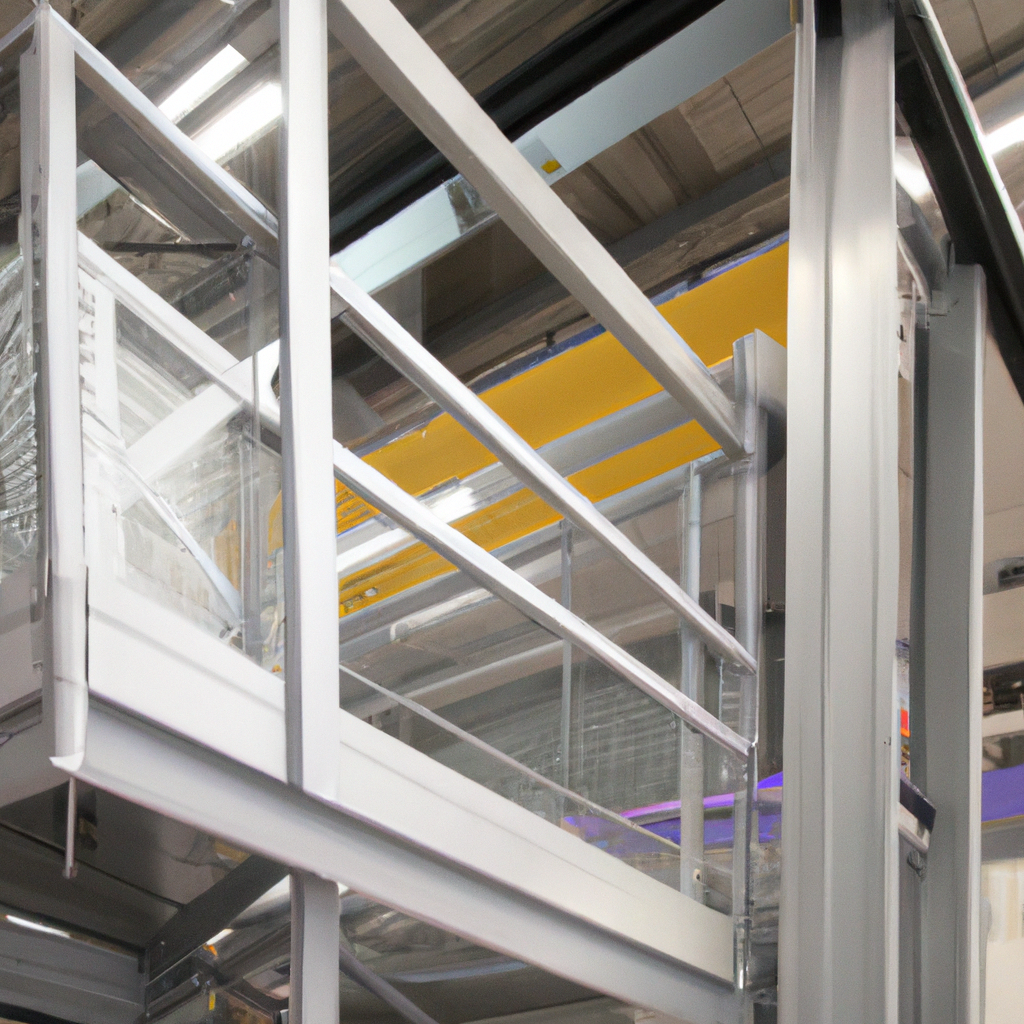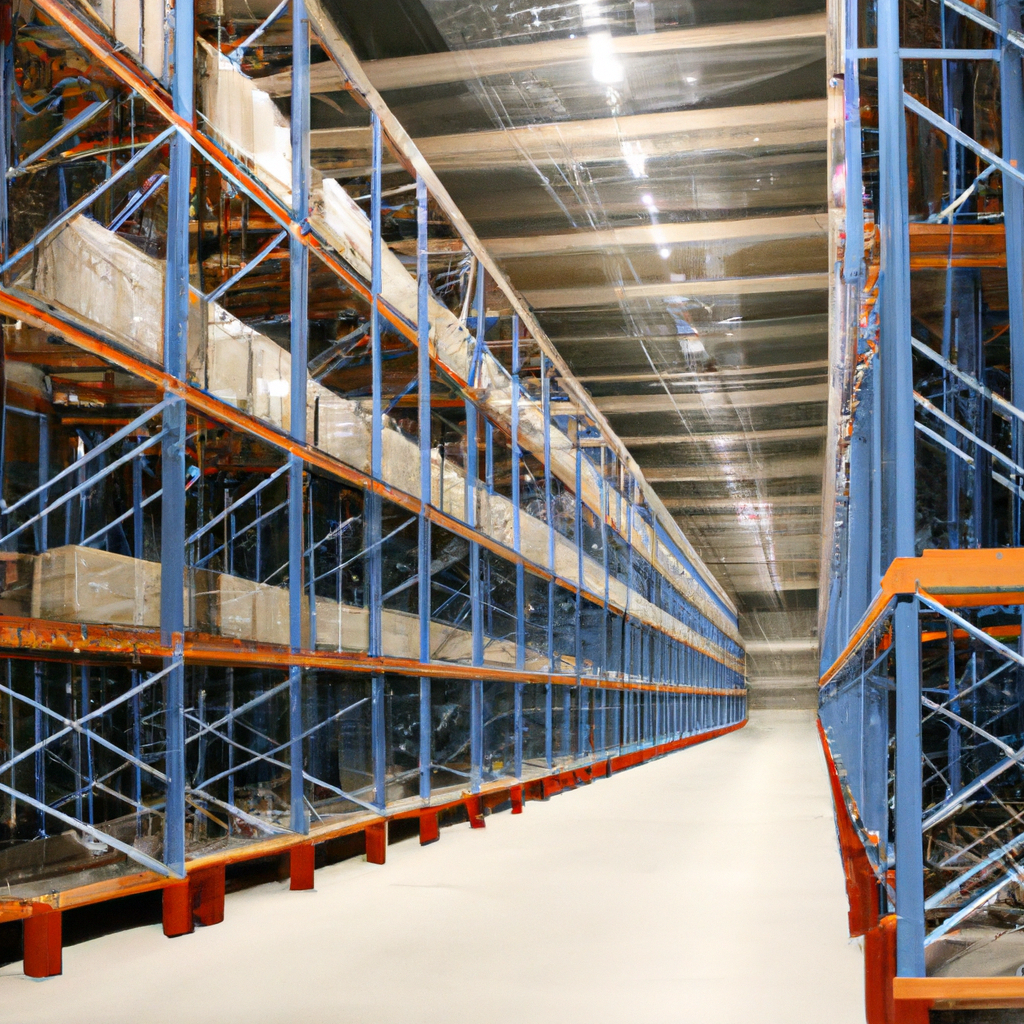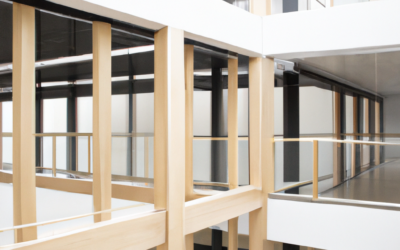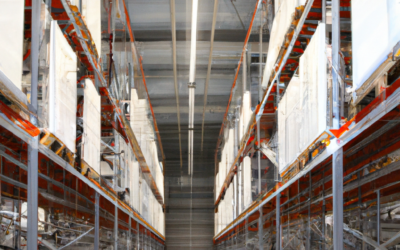Trending News
Deciphering the Complex Word of Sydney’s Family Law Firms
Navigating through the complexities of family law in the city can often feel like a daunting endeavour. Whether it's dealing with divorce, custody battles, or property settlements, finding the right legal support in Sydney cannot be understated. We will shed light on...
read moreMedical Training in Education: Empowering School Communities
In today’s world, where unpredictability is the only certainty, the ability to respond effectively to emergencies is invaluable. When it comes to the field of education and schools, this requirement is only amplified. For the sake of students and teachers alike,...
read moreReviving Your Floors: The Art of Timber Floor Polishing in Melbourne
Timber floors are a timeless and elegant choice for any home, offering warmth, character, and durability. Over time, however, even the most beautiful timber floors can lose their luster. Thankfully, in Melbourne, the art of timber floor polishing can breathe new life...
read morePopular Now
No Results Found
The page you requested could not be found. Try refining your search, or use the navigation above to locate the post.


Navigating Compliance: How Outsourced HR Can Ensure Regulatory Adherence
In today's complex regulatory environment, businesses face numerous challenges in maintaining compliance, particularly in the realm of human resources (HR). With ever-changing laws and regulations, ensuring adherence can be a daunting task for organizations of all...

Business Tips
Latest News
Exploring Respite Care Services: Supporting Family Caregivers
Respite care services play a crucial role in supporting family caregivers who dedicate their time and energy to caring for their loved ones. The demanding nature of caregiving can often lead to burnout and exhaustion, which is why respite care offers a much-needed break and support system for caregivers. In this article, we will explore the concept of respite care services, highlight their importance in supporting family caregivers, and provide insights into finding and making the most of these services.
Understanding Respite Care
Respite care refers to short-term relief for primary caregivers, allowing them to take a temporary break from their caregiving responsibilities. It serves as an essential support system, providing caregivers with the opportunity to recharge, tend to personal needs, and maintain a healthy work-life balance. Respite care services can take various forms, including in-home care, adult day care centers, or short-term residential facilities. The primary purpose of respite care is to ensure the well-being of both the caregiver and the care recipient.
Benefits of Respite Care
Respite care offers a range of benefits for family caregivers. Firstly, it provides them with an opportunity to prioritize their own physical and emotional well-being. Caregivers often neglect their own needs while focusing solely on the needs of their loved ones. Respite care allows them to take a step back, reducing stress levels and preventing burnout. By taking time for themselves, caregivers can improve their overall health and mental well-being, which ultimately enhances the quality of care they provide.
Additionally, respite care services positively impact the care recipient’s quality of life. It introduces a change in routine and offers the opportunity to socialize with others in a safe and supportive environment. Care recipients can engage in activities and programs tailored to their needs, fostering social connections and preventing isolation. Respite care also provides caregivers with peace of mind, knowing that their loved ones are in capable hands and receiving the care they need.
Finding Respite Care Services
When searching for respite care services, it is essential to conduct thorough research and evaluate available options. Start by reaching out to local community organizations, healthcare providers, or social service agencies to inquire about respite care programs in your area. Online resources and directories can also provide a comprehensive list of respite care providers.
While exploring potential options, consider the specific needs of your loved one and assess whether the services offered align with those needs. It is crucial to evaluate the qualifications and experience of respite care providers, ensuring they have the necessary skills to provide quality care. Seek recommendations from other caregivers or trusted professionals who have experience with respite care services.
Financial Considerations
Understanding the financial aspects of respite care is vital when planning for these services. Costs associated with respite care can vary depending on factors such as location, level of care required, and duration of services. Research different funding options, including government assistance programs, private insurance coverage, or grants offered by charitable organizations.
In some cases, private insurance plans may cover respite care services, so it is essential to review your policy and determine whether you are eligible for reimbursement. Consult with a financial advisor or contact insurance providers directly to gain a clear understanding of the coverage available.
Planning for Respite Care
Developing a comprehensive care plan is crucial to ensure a smooth transition during respite care periods. Communicate openly with the respite care providers, sharing vital information about your loved one’s needs, preferences, and routines. Provide detailed instructions regarding medication administration, dietary requirements, and any specific medical or behavioral considerations.
Maintaining clear communication channels throughout the respite care period is essential. Share contact information, including emergency numbers, and establish a regular check-in schedule to receive updates on your loved one’s well-being. This open line of communication fosters trust and ensures that you remain informed about any changes or concerns that may arise during the respite care period.
Overcoming Challenges
Family caregivers often face emotional challenges and feelings of guilt when considering respite care for their loved ones. It is essential to understand that taking care of oneself is not selfish but rather a necessary part of being an effective caregiver. Acknowledge the emotional concerns and seek support from other caregivers or support groups who can offer guidance and reassurance.
Another common concern is the quality of care provided during respite care periods. Trust is essential, and it is crucial to thoroughly evaluate respite care providers, tour the facilities, and ask detailed questions about their protocols, staff training, and safety measures. Request references or speak with other families who have used their services to gain insights into the provider’s reputation and the quality of care they deliver.
Making the Most of Respite Care
To maximize the benefits of respite care, it is essential to embrace this time for self-care and rejuvenation. Engage in activities that bring joy and relaxation, whether it’s pursuing a hobby, spending time with friends, or simply enjoying moments of solitude. Remember that taking care of yourself is not only beneficial for your well-being but also enhances your ability to provide quality care to your loved one.
Additionally, respite care can be an opportunity for the care recipient to engage in activities they enjoy or explore new interests. Encourage them to participate in social programs or engage in therapeutic activities offered by the respite care provider. This can have a positive impact on their overall well-being and contribute to their quality of life.
Conclusion
Respite care services play a vital role in supporting family caregivers by offering temporary relief and support. These services not only benefit caregivers by promoting their well-being and preventing burnout but also enhance the quality of life for care recipients. Finding suitable respite care options, understanding the financial considerations, and planning effectively are crucial steps to ensure a positive respite care experience. By embracing respite care and making the most of these services, family caregivers can maintain their own well-being while continuing to provide exceptional care to their loved ones.
Optimizing Space: Mezzanine Floors for Efficient Commercial Environments
Welcome to a comprehensive guide on optimizing space in commercial environments through the use of mezzanine floors. In this article, we will explore the concept of mezzanine floors, their benefits, factors to consider when installing them, design strategies for efficiency, and maintenance and safety measures. Additionally, we will examine real-world case studies that showcase successful implementations of mezzanine floors in various commercial settings. So, let’s dive in and discover how mezzanine floors can revolutionize your commercial space.
Understanding Mezzanine Floors

Definition and Purpose
Mezzanine floors refer to intermediate levels that are constructed between the main floors of a building. These platforms create additional usable space without the need for extensive construction or altering the existing structure. Mezzanine floors are typically installed in open areas with high ceilings, such as warehouses, retail spaces, and office environments, allowing businesses to maximize their available square footage.
Types of Mezzanine Floors
Mezzanine floors come in different types to suit specific requirements. Freestanding mezzanines are self-supporting structures, while rack-supported mezzanines utilize existing racking systems for additional support. Shelving-supported mezzanines are designed to integrate with shelving units, and structural mezzanines provide maximum strength and flexibility by connecting directly to the building’s structure.
Benefits of Mezzanine Floors
Maximizing Space Efficiency
One of the primary advantages of mezzanine floors is their ability to optimize space utilization. By effectively utilizing vertical space, businesses can expand their operations without incurring the high costs associated with relocation or new construction. Mezzanine floors provide a cost-effective solution for businesses to accommodate growing storage, manufacturing, or office needs within their existing premises.
Cost-Effective Solution
Compared to traditional construction methods, mezzanine floors offer a more economical alternative. The installation of mezzanine floors requires fewer materials and labor, significantly reducing costs. Additionally, mezzanine floors can often be erected without the need for disruptive construction work, minimizing downtime and operational disruptions.
Versatility and Customization
Mezzanine floors are highly versatile and customizable to meet the specific needs of businesses. They can be designed to accommodate various functions, including additional storage, production areas, office spaces, or retail displays. The flexible nature of mezzanine floors allows businesses to adapt their space as their requirements evolve.
Minimal Disruption to Operations
Installing mezzanine floors causes minimal disruption to ongoing operations. Unlike traditional construction projects that can be time-consuming and disruptive, mezzanine floors can be erected quickly and efficiently. This ensures that businesses can continue their operations with minimal downtime, leading to increased productivity and profitability.
Factors to Consider When Installing Mezzanine Floors
Structural Integrity and Safety
When planning the installation of mezzanine floors, ensuring structural integrity and safety is of paramount importance. Engaging professional engineers and contractors is crucial to assess the load-bearing capacity of the existing structure and ensure that the mezzanine floor meets all necessary safety standards and building codes.
Load Capacity and Weight Distribution
Understanding the load capacity and weight distribution of the mezzanine floor is essential to prevent structural failures or accidents. It is important to consider the weight of machinery, equipment, inventory, and personnel that will be present on the mezzanine floor. Proper weight distribution and load calculations must be performed to guarantee the safety and stability of the structure.
Building Regulations and Permits
Compliance with local building regulations and obtaining the necessary permits is crucial when installing mezzanine floors. Building codes and regulations may vary depending on the location and type of commercial space. Working with professionals who have expertise in navigating these regulations is recommended to avoid any legal or safety issues.
Accessibility and Logistics
When designing mezzanine floors, accessibility and logistics should be carefully considered. Adequate staircases, elevators, or lifts should be incorporated into the design to ensure ease of movement between levels. Additionally, logistics such as material handling, transportation, and storage should be taken into account to optimize workflow and operational efficiency.
Designing Mezzanine Floors for Efficiency
Optimizing Layout and Workflow
To achieve maximum efficiency, the layout and workflow of the mezzanine floor should be carefully planned. Analyzing the specific needs of the business, such as storage requirements or production processes, can help determine the optimal placement of workstations, machinery, and storage areas. Streamlining workflow and minimizing unnecessary movements can significantly enhance productivity.
Integration of Utilities
Efficient utilization of mezzanine floors involves considering the integration of utilities such as electricity, lighting, HVAC systems, and plumbing. Adequate provision of these utilities ensures a comfortable and functional working environment. Collaborating with professionals who specialize in mezzanine floor design can help ensure the seamless integration of utilities.
Consideration for Future Expansion
When designing mezzanine floors, it is prudent to plan for future expansion. Anticipating future growth and incorporating scalability into the design allows businesses to adapt to changing needs without significant modifications. Modular designs and flexible layouts can facilitate future expansion and minimize disruption to ongoing operations.
Maintenance and Safety Measures
Regular Inspections and Maintenance
Regular inspections and maintenance are vital to ensure the longevity and safety of mezzanine floors. Scheduled inspections should be conducted to identify any signs of wear, damage, or structural issues. Prompt repairs and maintenance can prevent minor problems from escalating into major concerns, reducing the risk of accidents and prolonging the lifespan of the mezzanine floor.
Fire Safety and Emergency Exits
Implementing adequate fire safety measures and emergency exits is crucial when installing mezzanine floors. Fire detection systems, sprinklers, and fire-resistant materials should be incorporated into the design. Clear signage and well-planned emergency exits should be readily accessible to ensure the safety of personnel in case of emergencies.
Case Studies: Successful Implementations
Mezzanine Floors in Warehouses
Several warehouses have successfully implemented mezzanine floors to maximize their storage capacities. By utilizing the vertical space, these warehouses have significantly increased their inventory levels without expanding their footprint. Mezzanine floors have allowed for efficient organization and streamlined picking and packing processes, enhancing overall warehouse productivity.
Mezzanine Floors in Retail Spaces
Retail spaces have leveraged mezzanine floors to create additional floor space for displays, product showcasing, and customer engagement. Mezzanine floors have enabled retailers to optimize their retail environments, leading to improved customer experiences and increased sales. The versatility of mezzanine floors allows retailers to adapt their space to changing trends and merchandising strategies.
Mezzanine Floors in Office Environments
Office environments have embraced mezzanine floors to accommodate growing teams and departments. Mezzanine floors provide additional workspace, meeting rooms, and breakout areas, enhancing collaboration and employee satisfaction. By utilizing vertical space, offices have been able to create dynamic and flexible work environments that foster creativity and productivity.
Conclusion
Mezzanine floors offer a compelling solution for optimizing space in commercial environments. With their ability to maximize space efficiency, provide a cost-effective alternative, and offer customization options, mezzanine floors are a valuable asset for businesses. By carefully considering factors such as structural integrity, load capacity, and accessibility, businesses can design efficient mezzanine floors that align with their specific requirements. Regular maintenance and adherence to safety measures ensure the long-term success and safety of these installations. By exploring successful case studies, we can witness the real-world benefits of mezzanine floors in various commercial settings.
Warehouse Shelving Systems: Maximizing Storage and Organization
Warehouse shelving systems play a crucial role in maximizing storage capacity and optimizing organization within a warehouse setting. In this article, we will explore the importance of warehouse shelving systems and the various types available. We will also delve into the factors to consider when choosing the right shelving system for your warehouse and the benefits they offer. Additionally, we will discuss the implementation and maintenance of these systems, highlight successful case studies, and touch upon future trends in warehouse shelving systems.
Importance of Warehouse Shelving Systems
Efficient storage and organization are vital for any warehouse operation. Warehouse shelving systems provide a structured approach to storing goods and materials, allowing for easy accessibility, efficient space utilization, and streamlined inventory management. With the increasing demands of modern logistics, businesses need effective shelving systems to meet storage requirements and ensure smooth operations.

Types of Warehouse Shelving Systems
Static Shelving Systems
Static shelving systems are commonly used for storing smaller items or products that don’t require frequent movement. They consist of fixed shelves that are sturdy and provide easy access to goods. These systems are versatile and can be adjusted to accommodate different storage needs.
Mobile Shelving Systems
Mobile shelving systems are designed to maximize storage capacity by eliminating unnecessary aisles. They use movable shelves that can be compacted together, creating additional space when not in use. This system is ideal for high-density storage areas and where space optimization is crucial.
Pallet Racking Systems
Pallet racking systems are specifically designed to store palletized goods. They provide easy access to stored items and maximize vertical space utilization. Common types of pallet racking systems include selective racks, drive-in racks, and push-back racks.
Cantilever Racking Systems
Cantilever racking systems are used for storing long and bulky items such as pipes, lumber, and steel bars. They feature arms extending from vertical columns, providing unobstructed access to the stored items. This system allows for efficient storage and retrieval of long goods.
Mezzanine Shelving Systems
Mezzanine shelving systems utilize vertical space by creating additional levels within a warehouse. These systems are particularly useful when floor space is limited. Mezzanines can be customized to accommodate various storage requirements, such as office spaces or additional storage areas.
Factors to Consider When Choosing Warehouse Shelving Systems
When selecting the appropriate warehouse shelving system, several factors need to be considered:
Storage Space Requirements
The amount of storage space required depends on the size and quantity of the items to be stored. Analyzing storage needs helps determine the type and configuration of the shelving system.
Load Capacity
Understanding the weight-bearing capacity of a shelving system is crucial to ensure safe storage. It is essential to consider both the static and dynamic load capacities of the system.
Accessibility
The ease of accessing stored items impacts operational efficiency. Choosing a shelving system that allows for quick and convenient access to goods enhances productivity and reduces handling time.
Flexibility
The ability to adapt and reconfigure the shelving system to accommodate changing storage needs is important. Flexibility allows for efficient space utilization and scalability as the business grows.
Cost
Budgetary considerations play a significant role in selecting the right shelving system. It is important to strike a balance between cost-effectiveness and the system’s ability to meet storage requirements.
Benefits of Using Warehouse Shelving Systems
Implementing warehouse shelving systems provides several benefits for businesses:
Maximizing Storage Capacity
Warehouse shelving systems enable businesses to utilize available space efficiently, maximizing storage capacity. By utilizing vertical space and optimizing layout configurations, warehouses can accommodate more goods within the same footprint.
Improved Organization
A well-designed shelving system enhances organization within the warehouse. It allows for categorization, labeling, and easy visual identification of stored items, reducing the time spent searching for specific goods.
Enhanced Efficiency
With a structured shelving system in place, employees can quickly locate and retrieve items, reducing picking and packing time. This streamlined process leads to increased productivity and faster order fulfillment.
Increased Safety
Warehouse shelving systems promote safety by providing secure storage for goods. Properly organized and secured items reduce the risk of accidents, such as items falling or workers tripping over cluttered areas.
Implementation and Maintenance of Warehouse Shelving Systems
Implementing and maintaining warehouse shelving systems require careful planning and regular upkeep:
Installation Process
The installation process involves assessing the warehouse layout, determining the optimal shelving system, and installing the necessary components. It is essential to follow manufacturer guidelines and ensure proper anchoring for stability and safety.
Regular Maintenance
To ensure the longevity and functionality of the shelving system, regular maintenance is crucial. This includes inspecting for damage, cleaning shelves, and addressing any repairs or adjustments needed promptly.
Future Trends in Warehouse Shelving Systems
As technology continues to advance, warehouse shelving systems are evolving to meet changing demands. Some future trends include:
- Automated and robotic systems for efficient storage and retrieval.
- Integration of smart sensors and RFID technology for real-time inventory tracking.
- Customizable and modular shelving systems to accommodate evolving storage needs.
- Sustainability-focused designs using eco-friendly materials and energy-efficient solutions.
Conclusion
Warehouse shelving systems are essential for maximizing storage capacity and optimizing organization in warehouses. By selecting the right shelving system based on storage requirements, load capacity, accessibility, flexibility, and cost considerations, businesses can reap the benefits of increased efficiency, improved organization, and enhanced safety. Regular maintenance and proper installation further ensure the longevity and functionality of these systems. As future trends emerge, warehouses can expect more advanced and sustainable shelving solutions to address their evolving needs.
Honoring Achievements: The Timeless Beauty of Engraved Plaques
Engraved plaques have long been cherished as a way to commemorate significant milestones, accomplishments, and contributions. Their beauty and durability make them an ideal choice for honoring individuals or groups in various settings. Let us embark on a journey to discover the fascinating aspects of engraved plaques and the profound impact they have on both the recipient and the giver.
The Significance of Honoring Achievements
Recognizing achievements is an essential part of human nature. By honoring the accomplishments of others, we not only celebrate their hard work but also inspire future generations to strive for greatness. Engraved plaques serve as tangible symbols of appreciation, leaving a lasting impression and motivating individuals to continue their pursuit of excellence.
Exploring Engraved Plaques
Engraved plaques are typically made from high-quality materials such as wood, metal, glass, or acrylic. These plaques provide a canvas for personalized messages, logos, artwork, or photographs that add a unique touch to the recognition. The combination of craftsmanship and customization makes engraved plaques stand out among other forms of acknowledgment.
History and Evolution of Engraved Plaques
The tradition of engraving dates back centuries, with artisans carving intricate designs into various materials. In ancient times, engraved plaques were used to commemorate military victories and religious ceremonies. Over time, the art of engraving evolved, and plaques became more widely used to honor achievements in diverse fields, including sports, academics, and corporate accomplishments.
Materials Used for Engraved Plaques
Engraved plaques can be crafted from a variety of materials, each with its unique characteristics and aesthetic appeal. Wood plaques exude warmth and sophistication, while metal plaques convey a sense of durability and prestige. Glass and acrylic plaques offer a modern and sleek look, allowing for stunning visual effects. The choice of material depends on the desired style, budget, and intended purpose of the plaque.
Customization Options
One of the remarkable aspects of engraved plaques is the ability to personalize them according to individual preferences and requirements. From selecting the shape, size, and material of the plaque to choosing the font, color, and layout of the engraving, customization options are virtually limitless. Engraved plaques can incorporate company logos, meaningful quotes, or even intricate designs to make the recognition truly special.
Engraving Techniques
Engraving techniques have advanced significantly, providing a range of options to enhance the appearance of plaques. Traditional methods, such as hand engraving and diamond drag engraving, offer precision and detail. Laser engraving, on the other hand, allows for intricate patterns and intricate designs. Each technique has its advantages and can be selected based on the desired outcome and the material of the plaque.
Popular Uses of Engraved Plaques
Engraved plaques find their place in various contexts, serving as prestigious awards, thoughtful gifts, or commemorative plaques. In the corporate world, engraved plaques are commonly presented as employee recognition awards, retirement gifts, or tokens of appreciation for clients and partners. They are also popular choices for sports tournaments, academic achievements, and community service honors.
Benefits of Engraved Plaques
The benefits of presenting engraved plaques extend beyond the act of recognition itself. These plaques create a sense of pride and accomplishment for the recipients, boosting their self-esteem and motivating them to excel further. For organizations, engraved plaques foster a culture of appreciation, increasing employee engagement, and creating a positive work environment.
Choosing the Right Engraved Plaque
Selecting the perfect engraved plaque involves considering various factors, such as the occasion, the recipient’s preferences, and the budget. It’s essential to choose a plaque that aligns with the significance of the achievement while reflecting the values and branding of the organization. Consulting with experienced plaque providers can ensure that the right choice is made, considering all the essential elements.
Maintaining and Preserving Engraved Plaques
To retain the pristine condition and visual appeal of engraved plaques, proper care and maintenance are crucial. Regular cleaning with appropriate methods and materials, such as non-abrasive cleaners and soft cloths, helps remove dust and maintain the plaque’s shine. Displaying the plaque in a suitable location, away from direct sunlight or extreme temperatures, ensures its longevity.
Engraved Plaques as Corporate Awards
Engraved plaques have become synonymous with corporate recognition and awards. They serve as powerful motivators, acknowledging outstanding contributions, achievements, and milestones of employees. Whether it’s celebrating sales targets, leadership excellence, or years of service, engraved plaques make a lasting impression and foster a culture of appreciation within the organization.
Engraved Plaques for Special Occasions
Special occasions such as anniversaries, retirements, or charity events often call for memorable and meaningful gifts. Engraved plaques provide an ideal solution, allowing personalized messages or dedications to be engraved, capturing the essence of the occasion. These plaques become cherished keepsakes, symbolizing the importance and impact of the event.
Engraved Plaques for Personal Recognition
Engraved plaques are not limited to corporate or formal settings. They also serve as heartfelt tokens of personal recognition and appreciation. Whether it’s honoring a loved one’s achievements, recognizing the efforts of volunteers, or commemorating personal milestones, engraved plaques offer a tangible way to express gratitude and admiration.
Conclusion
Engraved plaques stand as timeless tributes to honor achievements and commemorate special moments. With their customizable nature, durability, and aesthetic appeal, these plaques continue to hold immense value in various domains. Whether in the corporate world, at special events, or for personal recognition, engraved plaques serve as tangible reminders of accomplishment and inspire individuals to reach new heights.
A Stylish and Functional Choice: Unveiling the Beauty of Designer Blinds and Plantations
In today’s interior design landscape, the role of window treatments extends beyond mere functionality. Designer blinds and plantations have emerged as a stylish and practical choice for homeowners and interior enthusiasts alike. This article aims to explore the allure and benefits of designer blinds and plantations, providing insights into various options, customization, maintenance, cost considerations, and much more.

Understanding Designer Blinds and Plantations
Designer blinds and plantations are a versatile window treatment option that offers a perfect blend of style and functionality. Unlike traditional blinds, which often lack character, designer blinds and plantations provide an aesthetic appeal that enhances the overall look and feel of a space. They are designed to fit different window sizes and can be customized to suit various interior design styles.
Benefits of Designer Blinds and Plantations
Designer blinds and plantations offer a range of benefits that make them a worthwhile investment for homeowners. Firstly, they provide excellent light control, allowing you to adjust the amount of natural light entering your space. Additionally, these window treatments offer privacy, especially when paired with light-filtering or blackout fabrics. Moreover, designer blinds and plantations can contribute to energy efficiency by reducing heat transfer and minimizing the need for excessive air conditioning.
Popular Types of Designer Blinds and Plantations
When it comes to designer blinds and plantations, there are various types to choose from based on your preferences and needs. Venetian blinds are a classic option that features horizontal slats, while vertical blinds offer a contemporary look suitable for sliding doors and large windows. Plantation shutters, with their timeless appeal, are an elegant choice that adds sophistication to any room. Roller blinds, Roman shades, and sheer shades are also popular alternatives, each with its unique features and benefits.
Choosing the Right Design for Your Space
Selecting the perfect design for your space can be an exciting yet challenging task. Consider the overall style and theme of your interior when choosing between different materials, colors, and patterns. If you desire a clean and minimalistic look, opt for neutral colors and simple designs. On the other hand, if you want to make a bold statement, vibrant hues and intricate patterns can add personality and flair.
Customization Options
One of the major advantages of designer blinds and plantations is the ability to customize them according to your preferences. From fabric selection and color coordination to motorization and remote control operation, the options are vast. Customizing your blinds or shutters allows you to create a truly personalized look that complements your existing decor and suits your lifestyle.
Maintaining and Cleaning Designer Blinds and Plantations
Proper maintenance is essential to keep your designer blinds and plantations looking their best. Regular dusting and occasional deep cleaning are recommended to remove dirt and allergens. The cleaning method may vary depending on the material of your window treatments, so it’s essential to follow the manufacturer’s guidelines for optimal care. Additionally, inspecting and addressing any mechanical issues promptly can extend the lifespan of your blinds or shutters.
The Cost of Designer Blinds and Plantations
The cost of designer blinds and plantations can vary depending on factors such as material, size, customization options, and the manufacturer. While they may be more expensive than standard blinds, the added value they bring to your space often justifies the investment. Remember to consider the long-term benefits, durability, and the impact on your overall interior design when evaluating the cost.
Eco-Friendly Options
For those who prioritize sustainability, eco-friendly options are available in the realm of designer blinds and plantations. Look for materials that are responsibly sourced, such as sustainably harvested wood or fabrics made from recycled materials. Additionally, some window treatments are designed to improve energy efficiency, reducing your carbon footprint and helping you create a greener home.
Enhancing Privacy and Light Control
Privacy and light control are important considerations when choosing window treatments. Designer blinds and plantations offer flexibility in managing both aspects. You can tilt the slats or adjust the louvers to allow natural light while maintaining privacy. With light-filtering or blackout options, you can create the desired ambiance and control the amount of light entering your space.
Incorporating Designer Blinds and Plantations in Different Spaces
Designer blinds and plantations can be seamlessly incorporated into various spaces throughout your home. Whether it’s the living room, bedroom, kitchen, or home office, these window treatments add charm and functionality to any environment. Consider the specific needs of each space, such as moisture resistance for bathrooms and kitchens or room-darkening options for bedrooms, to optimize the benefits of your designer blinds and plantations.
Expert Tips for Decorating with Designer Blinds and Plantations
To make the most of your designer blinds and plantations, here are a few expert tips for decorating with them:
- Mix and Match: Don’t be afraid to mix different types of blinds or shutters for a visually appealing look.
- Layer with Curtains: Pair your designer blinds or shutters with curtains to add depth and texture to your windows.
- Consider Your View: Opt for blinds or shutters that allow you to maintain a pleasant view when open.
- Experiment with Colors: Play with contrasting or complementary colors to create a focal point in your space.
- Seek Professional Advice: If you’re unsure about the best design choices for your home, consult an interior designer or window treatment specialist.
Conclusion
Designer blinds and plantations offer a stylish and functional solution to elevate your home’s interior design. With their versatility, customization options, and numerous benefits, they have become a popular choice among homeowners. By understanding the different types, customization possibilities, and expert tips for incorporating them, you can create a space that is both visually stunning and practical.
Unsecured Personal Loans for Bad Credit: Accessing Funds Without Collateral
If you find yourself in a situation where you need financial assistance but have a less-than-ideal credit score, you might be wondering if it’s possible to access funds without providing collateral. The answer is yes! Unsecured personal loans for bad credit can provide a viable solution for individuals facing credit challenges. In this article, we will delve into the concept of unsecured personal loans and how they can help you overcome financial hurdles. So, let’s get started!
Introduction
When facing unexpected expenses or financial emergencies, obtaining a loan can be a practical option. However, traditional loans often require collateral, such as a car or property, which can be challenging for individuals with bad credit. Unsecured personal loans, on the other hand, offer a potential lifeline by allowing borrowers to access funds without collateral.
Understanding Unsecured Personal Loans
Unsecured personal loans are loans that are not backed by any collateral. Unlike secured loans, which rely on assets to secure the loan, unsecured personal loans are approved based on the borrower’s creditworthiness and ability to repay. These loans provide borrowers with the flexibility to use the funds for various purposes, such as debt consolidation, medical expenses, home improvements, or even vacations.
The Significance of Bad Credit
Having bad credit can significantly impact an individual’s financial options. It is typically the result of past late payments, defaults, or high credit utilization. Lenders view bad credit as an indication of higher risk, making it challenging to secure loans from traditional financial institutions. However, with the availability of unsecured personal loans for bad credit, individuals with less-than-perfect credit scores have a chance to access funds when needed.
Exploring Credit Debt Consolidation
One common use for unsecured personal loans is credit debt consolidation. Many individuals with bad credit may find themselves struggling to manage multiple high-interest debts, making it difficult to make progress towards financial stability. Credit debt consolidation involves taking out a single loan to pay off multiple debts, effectively combining them into a single monthly payment with a potentially lower interest rate. This approach can simplify finances and help individuals regain control over their debt.
Benefits of Unsecured Personal Loans for Bad Credit
Unsecured personal loans for bad credit offer several advantages to borrowers in challenging financial situations. Here are some key benefits:
- Flexible Use of Funds: Unlike specific-purpose loans, unsecured personal loans can be used for various needs, including debt consolidation, medical bills, education expenses, or home improvements.
- No Collateral Required: As the name suggests, these loans do not require collateral, making them accessible to individuals who may not possess valuable assets to secure a loan.
- Quick Approval and Disbursement: Online lenders specializing in unsecured personal loans often provide quick approval and disbursal processes, allowing borrowers to access funds in a timely manner.
- Credit Score Improvement: Timely repayment of an unsecured personal loan can positively impact a borrower’s credit score, helping them rebuild their creditworthiness over time.
Eligibility Criteria for Unsecured Personal Loans
While unsecured personal loans for bad credit offer more flexibility compared to traditional loans, lenders still consider certain eligibility criteria. Some common factors lenders assess include:
- Credit Score: While bad credit is accepted, having a higher credit score can increase the likelihood of loan approval and potentially result in better terms.
- Income and Employment Stability: Lenders typically require borrowers to have a stable income source to ensure they can repay the loan.
- Debt-to-Income Ratio: Lenders assess the borrower’s debt-to-income ratio to determine their ability to manage additional debt.
How to Apply for Unsecured Personal Loans
The application process for unsecured personal loans is relatively straightforward, especially when compared to traditional loans. Here are the general steps involved:
- Research Lenders: Begin by researching online lenders that specialize in providing unsecured personal loans for individuals with bad credit. Compare interest rates, loan terms, and customer reviews to find a reputable lender.
- Gather Required Documents: Prepare the necessary documents, including identification proof, income statements, and bank statements.
- Complete the Application: Fill out the online application form provided by the lender. Ensure all information is accurate and up to date.
- Review and Accept Loan Terms: Carefully review the loan terms, including interest rates, repayment period, and any additional fees. Once satisfied, accept the loan offer.
- Verification and Approval: The lender will verify the provided information and assess your eligibility. If approved, you will receive a loan agreement outlining the terms and conditions.
- Loan Disbursement: Upon signing the loan agreement, the funds will be disbursed into your bank account. The time frame for disbursement varies among lenders but is typically within a few business days.
Factors to Consider Before Applying
Before applying for an unsecured personal loan for bad credit, it’s essential to consider a few factors to ensure you make an informed decision. These factors include:
- Interest Rates and Fees: Compare interest rates and any additional fees charged by different lenders to find the most favorable terms.
- Loan Repayment Period: Evaluate the loan repayment period and ensure it aligns with your financial capabilities. A longer repayment period may result in lower monthly payments but may also incur higher overall interest.
- Total Loan Cost: Calculate the total cost of the loan, including interest and fees, to understand the financial implications of borrowing.
- Lender Reputation: Research the lender’s reputation and customer reviews to ensure they are reliable and trustworthy.
Tips for Choosing the Right Lender
To ensure a positive borrowing experience, consider the following tips when choosing a lender for your unsecured personal loan:
- Compare Multiple Lenders: Obtain quotes from several lenders and compare their terms, interest rates, fees, and customer reviews.
- Read the Fine Print: Carefully review the loan agreement, including terms and conditions, repayment terms, and any potential penalties.
- Customer Support: Assess the lender’s customer support channels and responsiveness to ensure you can reach out for assistance if needed.
- Loan Repayment Flexibility: Check if the lender offers any flexibility in terms of repayment, such as the ability to make early payments without penalties.
Alternatives to Unsecured Personal Loans
While unsecured personal loans can be a suitable option for accessing funds without collateral, there are alternatives worth considering:
- Secured Personal Loans: If you have valuable assets, such as a car or property, you may qualify for a secured personal loan, which often offers lower interest rates due to the collateral provided.
- Credit Counseling: Seek assistance from credit counseling agencies to explore debt management options and develop a customized plan for improving your financial situation.
- Peer-to-Peer Lending: Peer-to-peer lending platforms connect borrowers with individual lenders, offering potentially more flexible terms and rates.
Building and Improving Credit
Obtaining an unsecured personal loan for bad credit can also be an opportunity to rebuild and improve your credit score. Responsible management of the loan can positively impact your creditworthiness. Here are some tips to consider:
- Make Timely Payments: Ensure you make timely payments on your loan, as this contributes to a positive payment history.
- Manage Credit Utilization: Keep your credit utilization ratio low by minimizing credit card balances and managing debts effectively.
- Monitor Your Credit Report: Regularly review your credit report to identify any errors or discrepancies that may be negatively affecting your credit score.
Managing Finances Responsibly
While unsecured personal loans for bad credit can provide a much-needed financial boost, it’s essential to manage your finances responsibly to avoid further debt and financial challenges. Consider the following tips:
- Budgeting: Create a budget to track your income and expenses, enabling you to allocate funds wisely and prioritize debt repayment.
- Emergency Fund: Build an emergency fund to handle unexpected expenses and reduce the need for additional borrowing.
- Financial Education: Continuously educate yourself about personal finance to make informed decisions and develop healthy financial habits.
Conclusion
Unsecured personal loans for bad credit offer a valuable option for individuals seeking financial assistance without collateral. These loans provide flexibility, quick approval, and the potential to rebuild credit. By understanding the process, eligibility criteria, and responsible financial management, borrowers can access the funds they need while working towards a more secure financial future.
Turbocharge Your Business Journey: Discover SiDCOR’s Business Coaching Service
Bridging the gap between good and great in business can be quite the challenge. The difference often lies in choosing the right support system and having the resilience to accept feedback. Enter the world of business coaching, a realm of purposeful guidance, personalised advice, and a platform for igniting business growth and efficiency. A key player in this domain, SiDCOR offers a highly effective business coaching service which I find compelling for a multitude of reasons.
The Essence of SiDCOR’s Coaching
Understanding the ‘why’ behind your business is critical, and SiDCOR takes this very seriously. Why do you do what you do? What purpose does your business serve? Clarifying the answers to these questions will shape how you engage with your clients and employees. SiDCOR’s coaching will help you discover your ‘why’, articulating it in a way that will set you apart from your competition.
Accountability in Progress
Running a business is like navigating through uncharted waters. You need a compass, a map, and sometimes, a guide. This is where SiDCOR’s coaching service shines. They ensure you are focusing on the ‘big rocks’, the significant tasks that drive growth and success, whilst also holding you accountable for their completion. In doing so, they create a conducive environment for tackling uncertainty, maintaining focus on results, and achieving tangible outcomes.
A Trusted Sounding Board
There are times when business owners find themselves stuck at a crossroad, unsure about which path to take. Here, a reliable sounding board to bounce off ideas or an advisor to give clear direction can be invaluable. SiDCOR provides precisely that – someone who understands you and your vision, enabling you to make better decisions.
Direction and Strategic Planning
One of the common challenges for small business owners is understanding the direction in which their business should go. SiDCOR not only assists in keeping your business on track, but also offers fresh ideas and abundant knowledge to ensure its growth and success. By helping you look beyond the daily grind, they facilitate focus on key areas for improvement, resulting in the development of robust core business strategies.
Cultivating Leadership
SiDCOR’s coaching also promotes personal growth and leadership. They help you develop strategies and habits to effectively lead others and drive your business. Strengthening leadership skills can foster a more effective business, improved mindset, greater motivation, heightened self-awareness, and superior communication skills – all key components to enhancing team performance and fostering a positive company culture.
Paul, Your Cornerstone of Success
At the helm of SiDCOR is Paul, the Business Strategy and Coaching Specialist. With over a decade of experience, he brings a wealth of knowledge and expertise to the table. Paul isn’t just a coach; he’s an entrepreneur, wealth expert, and specialist in business building. Committed to effecting positive change, he brings his vast experience and passion to the coaching process.
Key Offerings – An Overview
If you are a business owner grappling with confusion, uncertainty, or indecision, SiDCOR’s coaching offerings could be your lifeline. From a half-day intensive personal coaching and strategy session to two monthly follow-up meetings, they’ve got you covered. They also offer unlimited calls, quarterly structured meetings, and even special meetings or Zoom calls as needed to address any arising issues. Essentially, they provide a 360-degree approach aimed at helping you move from being a business operator to a business owner.To sum it up, SiDCOR’s business coaching service is not merely about guiding you through the steps of running a business. It’s about imparting the skills and mindset necessary for creating and maintaining a successful business
Unleashing the Power of Partnership: 9 Essential Tips for Maximising Your Experience with the Best Family Lawyers in Sydney
Family law matters can be a rollercoaster of emotions and complexities. To ensure a favourable outcome, it is vital to engage the best family lawyers in Sydney. However, simply hiring a top-notch legal professional isn’t enough; you must also know how to optimally leverage their expertise. In this article, we provide nine indispensable tips to help you reap the full benefits of your chosen family lawyer’s guidance and support.
Define Your Goals and Objectives
Before embarking on your legal journey, take time to define your goals and objectives. Consider what you hope to accomplish and any potential roadblocks you may encounter. Armed with this clarity, your lawyer can craft a tailored strategy and provide targeted advice that addresses your unique circumstances.
Do Your Homework
Take the helm and research family law matters relevant to your situation. Familiarising yourself with legal jargon and processes will help you better comprehend your lawyer’s advice, empowering you to make informed decisions that align with your best interests.
Open and Honest Communication
Forge a strong connection with your lawyer by being open and honest about your situation. Transparent communication will enable your lawyer to thoroughly understand your needs and provide appropriate guidance, setting the stage for a successful partnership.
Be Organised and Prepared
Make the most of your time with your lawyer by arriving at meetings and consultations armed with necessary documentation and a list of questions. Being organised will not only ensure a smooth legal process but also demonstrate your commitment to achieving the best possible outcome.
Set Realistic Expectations
Family law matters are often unpredictable, and outcomes may not always align with your initial expectations. Discuss your situation with your lawyer to set realistic expectations and remain open to alternative solutions, enabling you to stay grounded in the face of uncertainty.
Collaborate Actively with Your Lawyer
Join forces with your family lawyer, providing timely responses to requests for information and actively participating in decision-making. A collaborative approach will help you feel more in control and ensure your lawyer can effectively champion your cause.
Seek Emotional Support
The choppy waters of family law can take an emotional toll. While your lawyer can provide legal support, it’s essential to seek emotional support from friends, family, or a therapist. This will help you maintain a clear head and focus on the legal aspects of your case, ensuring that you are better equipped to face any challenges that may arise.
Understand the Cost
Engaging the best family lawyers in Sydney can come with a hefty price tag. Request a detailed estimate of fees and discuss potential additional costs to avoid being caught off-guard. Understanding the financial implications of your legal journey will help you manage your budget and make informed decisions that align with your financial constraints.
Adapt and Adjust
As your family law matter progresses, circumstances may shift. Be prepared to adapt and adjust your strategy in collaboration with your lawyer. Embracing flexibility will increase your chances of achieving a positive outcome, ensuring that you are ready to face whatever storms may come your way.
Harnessing the Power of Knowledge and Preparation
By adhering to these nine tips, you can unlock the full potential of your experience with the best family lawyers in Sydney. A partnership grounded in clear communication, collaboration, and adaptability will set the stage for a more successful legal journey. As you navigate the complexities of family law, remember to remain focused on your goals, seek emotional support, and be prepared for the challenges ahead. With the right mindset and the best family lawyers in Sydney by your side, you can confidently face the future and secure the outcome you desire.
Preserving Flavor and Freshness: The Benefits of Food Packaging Australia Has To Offer
Think about it; there is nothing quite like the satisfaction of biting into a juicy, fresh piece of fruit or savouring a well-cooked meal. However, one question that almost always comes to mind is — how do we ensure that our food stays fresh and delicious until we’re ready to consume it?
The answer isn’t far-fetched; food packaging — a pivotal component of the food industry that helps preserve food quality, safety, and taste. In this insightful post, we’ll discuss the top benefits of the food packaging Australia has to offer and how it keeps your food safe and tasty.
Top 5 Food Packaging Trends to Watch in 2023
As we hinted earlier, food packaging is a key aspect of the food industry (worldwide) that is evolving at a dizzying speed. As we march farther into 2023, there are quite an impressive number of exciting trends to look out for in the world of food packaging.
And we have taken the stress off your shoulders to round them up. Here is our list of the top 5 trends that are causing so much buzz:
- Sustainable Packaging
Sustainability has been a growing trend in food packaging for several years now, and it is set to continue in 2023. Consumers are increasingly concerned about the impact of packaging waste on the environment, and they are looking for packaging solutions that are eco-friendly and sustainable.
In response, many food packaging companies are exploring new materials and technologies that can help reduce waste and increase sustainability. Expect to see more biodegradable, compostable, and recyclable packaging options in the coming years.
- Smart Packaging
Advances in technology are driving the development of smart packaging, which has the potential to transform the food industry.
Smart packaging incorporates sensors and other technology that can monitor food quality and freshness, provide nutritional information, and even detect foodborne pathogens. Smart packaging can help reduce food waste and increase food safety, making it an exciting trend to watch in 2023.
- Customised Packaging
As consumers become more health-conscious and demand more personalised products, customised packaging is becoming more popular.
Customised packaging can help to create a unique brand identity and differentiate products in a crowded market. In 2023, expect to see more food packaging solutions that are tailored to specific products, markets, and consumer preferences.
- Minimalist Design
Minimalist packaging design has been growing in popularity in recent years, and it is set to become even more prevalent in 2023. The minimalist design emphasises simplicity and clarity, with clean lines, simple graphics, and bold typography.
Minimalist packaging can help to communicate a brand’s values and make products stand out on crowded store shelves.
- Reusable Packaging
As concerns about plastic waste continue to grow, reusable packaging is becoming an increasingly popular trend in the food industry. Reusable packaging allows consumers to use a product multiple times, reducing waste and lowering the environmental impact of packaging.
In 2023, expect to see more food packaging solutions that are designed to be reusable, including refillable containers and packaging that can be returned to the manufacturer for reuse.
What Are The Benefits of Food Packaging?
- Protection from Contamination
One of the primary functions of food packaging is to protect food from contamination. The food packaging Australia offers is designed to prevent the entry of bacteria, viruses, and other harmful microorganisms that can cause foodborne illnesses.
This is particularly important for perishable food items such as meat, dairy, and fresh produce.
- Preservation of Freshness
Food packaging helps to preserve the freshness and flavour of food products. The packaging helps to seal in moisture and prevent the entry of oxygen, which can cause food to spoil. This is particularly important for baked goods, snacks, and other food items that can go stale quickly.
- Extended Shelf Life
Proper food packaging can extend the shelf life of food products, reducing food waste and saving money.
Modern food packaging is designed to preserve the quality and safety of food products for as long as possible, allowing consumers to enjoy fresh and tasty food for longer.
- Environmentally Friendly
The food packaging Australia offers is primarily designed to be environmentally friendly, with a focus on reducing waste and promoting sustainability.
Many food packaging materials used in Australia are recyclable, biodegradable, or compostable, making them a more sustainable choice for both consumers and the environment.
In conclusion
The impressive food packaging Australia offers is essential for preserving the flavour, freshness, and safety of food products. Proper food packaging helps to protect food from contamination, extend the shelf life of products, and reduce food waste.
Choosing the right food packaging is crucial for maintaining the quality and safety of food products. By choosing the safe food packaging Australia has to offer, consumers can enjoy fresh, tasty, and safe food for longer.
Debunking 9 Myths Surrounding Sydney Family Law
Sydney family law can be a complex and confusing topic, especially for those who are new to it. Unfortunately, there are several myths and misconceptions surrounding family law in Sydney that can make it even more challenging to navigate. In this blog post, we will take a closer look at nine of the most common myths surrounding Sydney family law and debunk them once and for all.
Myth: Mothers Always Get Custody of Children in Divorce Cases
Fact: The belief that mothers always get custody of children in divorce cases is a common myth. The court considers the best interests of the child when deciding custody, which means that both parents have an equal chance of being awarded custody. Gender is not a factor in the decision-making process.
Myth: You Don’t Need a Lawyer for a Family Law Case
Fact: While it is not legally required to have a lawyer for a family law case, it is highly recommended. Family law cases can be complex, and having a knowledgeable and experienced lawyer on your side can significantly improve your chances of a positive outcome.
Myth: Domestic Violence Is Not a Significant Factor in Family Law Cases
Fact: Domestic violence is a severe issue and is taken very seriously in family law cases. If you have been a victim of domestic violence, it is essential to inform your lawyer so they can help you obtain a restraining order or other protective measures.
Myth: The Court Always Orders a 50/50 Split of Property in a Divorce
Fact: The court considers various factors when determining property division, including each party’s contributions to the marriage and the financial needs of each party. The split is not always 50/50.
Myth: You Can’t Modify Child Support Orders
Fact: Child support orders can be modified if there has been a significant change in circumstances, such as a job loss or a change in income.
Myth: You Can’t Enforce Visitation Orders
Fact: If one parent is not following a visitation order, the other parent can seek enforcement through the court system.
Myth: Pre-Nuptial Agreements Are Only for the Wealthy
Fact: Pre-nuptial agreements can be beneficial for anyone, regardless of their income or assets. They can help protect your interests and assets in case of divorce.
Myth: Collaborative Divorce Is Always the Best Option
Fact: Collaborative divorce can be an excellent option for some couples, but it is not always the best choice. Each case is unique, and it is essential to consult with a lawyer to determine the best course of action.
Myth: You Can Represent Yourself in Court
Fact: While it is possible to represent yourself in court, it is highly recommended that you hire a lawyer. Family law cases can be complicated, and having a lawyer on your side can help ensure that your rights are protected.
The Bottom Line
There are many myths and misconceptions surrounding Sydney family law. If you are going through a family law case, it is essential to consult with a knowledgeable and experienced lawyer who can help you navigate the process and ensure that your rights are protected. Remember, each case is unique, and what works for one person may not work for another. Take the time to research your options and choose the course of action that is best for you.












